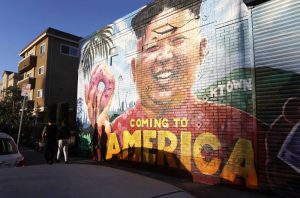Ten years ago, in the closing months of George W. Bush’s presidency, the United States legitimised India’s status as a nuclear weapons state. Washington bent the rules and signed an agreement that allowed India to buy US dual-use nuclear technology, including materials and equipment that could be used for nuclear bombs.
India (like Pakistan, Israel and North Korea) was not a signatory to the Treaty on the Non-Proliferation of Nuclear Weapons (NPT) but the arrangement was a quid pro quo for lucrative business deals between Indian and US companies.
The deal with India was meant to counter China’s growing influence but it fundamentally reversed half-a-century of US non-proliferation efforts and tacitly encouraged nuclear competitiveness in South Asia.
That 2008 US-India deal acquires new prominence in June 2018. Once again, a US president has upended America’s stated non-proliferation goals. On June 12, Donald Trump met with North Korean leader Kim Jong-un as an equal. This was solely because, or so it seemed, Kim was owed the respect due to a nuclear power.
Trump expressed satisfaction with Kim’s vague commitment to denuclearisation. In effect, North Korea, which reneged on the NPT years ago and has since repeatedly exulted in its destructive capability, was recognised as a de facto nuclear weapons state by the United States.
This has serious ramifications for North-east Asia and the Middle East. Just as the US-India agreement encouraged Pakistan to expand its nuclear weapons programme, the Trump-Kim pact is likely to raise concerns about South Korea and Japan’s long-term security and prompt a new yearning for the ultimate deterrent.
This could have a domino effect. North-east Asian proliferation could trigger copycat moves — Iran is an obvious candidate with Saudi Arabia not far behind. In essence, the NPT, the main bulwark against the spread of nuclear weapons, would be a nullity half-a-century since it went into force.
These developments — unrestrained, expensive and scary — would face little pushback from Trump. As US president he might rant about the Iranian threat but, in March 2016, candidate Trump was sanguine, even encouraging about the possibility of nuclear proliferation.
“Unfortunately, we have a nuclear world now,” he said to the New York Times on March 26, 2016. “Would I rather have North Korea have them (nuclear weapons) with Japan sitting there having them also? You may very well be better off if that’s the case.”
Then to CNN’s question four days later whether South Korea and Saudi Arabia should have nukes, Trump replied as follows: “Saudi Arabia, absolutely… Can I be honest with you? It’s going to happen anyway. It’s only a question of time. They’re going to start having them or we have to get rid of them entirely. But you have so many countries already, China, Pakistan, you have so many countries, Russia, you have so many countries right now that have them.”
In a sense, the legitimacy newly given by Trump to North Korea kicks it all into gear. Almost no one believes the North Koreans will give up their nuclear arsenal; Kim calls it the country’s “treasured sword” and, indeed, it is its only guarantee of survival. Accordingly, North-east Asia, just like South Asia, will have to develop a multipolar balance of power.
Veteran Singapore diplomat Bilahari Kausikan, ambassador-at-large in the Foreign Affairs Ministry, has said it is only a matter of time before Japan and South Korea become nuclear-armed states. Japan is determinedly pacifist and South Korea flirted with the idea of having its own nuclear weapons only very briefly in the 1970s.
Independent nuclear deterrence, Kausikan argues, is the only possible response to the continuing North Korean threat, the reality that China is modernising its nuclear forces and that “American extended deterrence in North-east Asia will be eroded, as it was decades ago in Europe.”
Move sideways on the world map and the pattern is frighteningly ripe for repetition in the Middle East.


